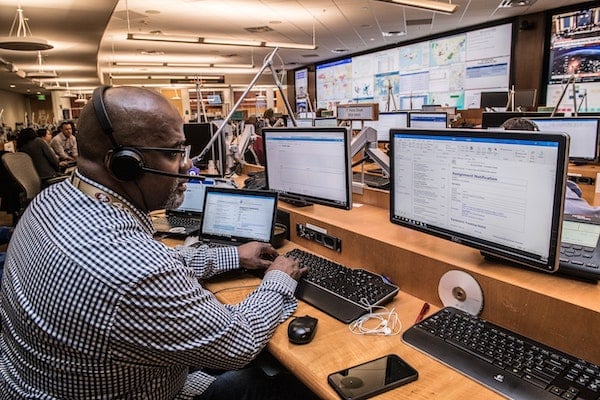Published on
Resetting Expectations for Student Advising Services

Academic advising services are central to the on-campus experience—but being thrown into the digital environment brings the need to reshape these services. Students need to know you’re there for them, beyond being able to tell them the course requirements for their certificate or degree. With the fast delivery of online education, advising services need to be accessible and flexible. In this interview, Joe Murray discusses how advising services have changed since the pandemic, the challenges in the process, and how expectations have adapted in this shift to a digital environment.
The EvoLLLution (Evo): How have advising services been affected by the pandemic?
Joe Murray (JM): The pandemic has forced all of us to examine and rethink how we reach out, connect, and communicate with our students. Everybody talks about going back to the old normal and getting things back to the way they were. Quite frankly, specifically for academic advising, the old normal wasn’t perfect. There were things that we could have and should have done better. I always like to create opportunities, regardless of how challenging the situation. We can’t downplay what has happened, but we can find opportunities to move things forward and improve them.
Some of the things that have come out of this have been a bit of a surprise. We’re seeing more students now virtually than we ever did in person with the same staffing numbers. Our no-show rates have been cut in half. Before the pandemic, 99.9% of out appointments were face-to-face. The only time we would conduct a meeting virtually is if they were, for example, a veteran overseas. With face-to-face appointments, students often felt unmotivated to come to campus (if they are a commuter) or walk across it (on-campus residents). Weather, transportation, and poor planning were common reasons for missed appointments. But now that we have switched to the virtual world, our no-show rates have dropped from about 16% to less than 8%.
Evo: What are some of the challenges you’re seeing as a result of this shift?
JM: One of the challenges with this virtual delivery of services is resetting some of our expectations with students and having students reset their expectations for us as well. Early in the pandemic, the vast majority of our meetings were phone calls. Students and staff weren’t comfortable with videoconferencing. It has been a slow learning curve, but we’re getting to a point where students are comfortable with video. Meetings with staff have been easier when it comes to the technology, but we have had to become experts on using Zoom, Teams, Skype and WebEx. We are working hard to make sure that students are able to adapt as well.
With an entire semester of virtual education under their belts, students are navigating their courses and meetings much more easily than before. One of the more common challenges now is that not every student has robust web access. Sometimes they live in an area that does not support the bandwidth they need or there are multiple users at home accessing the internet at the same time. Families are likely to have children who also need both the computer and bandwidth at the same time.
We ultimately left it up to the student to choose which mode they want to interact with us–telephone or video call. We are encouraging video as much as possible now, and more students are taking us up on it. The video call gives us the advantage of sharing screens, links, documents, resources and video. The student can also record or document the conversation.
The added dimension to video advising are the non-verbal responses. If you’re speaking to a student about what they’re passionate about, but you physically cannot see a reaction, it is very difficult to fully and accurately provide good insight and advice. We’ve been encouraging students to treat these meetings as a professional conversation. Early in the transition, students were often walking through a grocery store, having dinner, in bed, driving or in some other inappropriate location. We want to spend more time reinforcing our expectations for students in these appointments.
Evo: Did you have any other expectation resets that you wanted to cover in terms of how to make sure students are set up to leverage these virtual advising sessions?
JM: We needed to remind students of their backgrounds and what’s going onscreen behind them. There have been a few embarrassing walkthroughs with people and pets. Students have to remind family members that they’re live. From a staff perspective, we just reenforce with our advisors to remain professional, have an appropriate digital filter background and attire and no eating during the appointment. It’s very easy to roll out of bed and log onto your computer. That doesn’t require a suit and tie, but don’t have that “just getting up look” when talking with a student either. We just need to be mindful of how professional we’re being in this new environment.
Things have improved as all of us have adapted to the current realities. But all of this change has underscored the vital importance of shifting an advising definition from only course scheduling to a relationship building as well. The best framework, we have discovered, to make this fundamental shift is called appreciative advising. It’s a model based on building relationships with students. The challenge nationwide has always been that academic advising at most institutions had been defined as course scheduling. Students would come in, tell the staff member which major they’re pursuing, and the staffer would give them a list of requirements to earn that degree. That’s important, but when you look at our retention and graduation rates, it’s not enough. Especially now in the virtual environment, if it’s a transactional conversation, the student does not feel that they can reach out to a staff member for help. So, we started to move away from the course scheduling-only model and defined advising as a relationship building. Though certainly not the only reason for improvement, since we began making that transition seven years ago, our four-year graduation rates have increased over 28% and our first-year retention rates over 15%.
This interview was edited for length and clarity.
Disclaimer: Embedded links in articles don’t represent author endorsement, but aim to provide readers with additional context and service.
Author Perspective: Administrator



